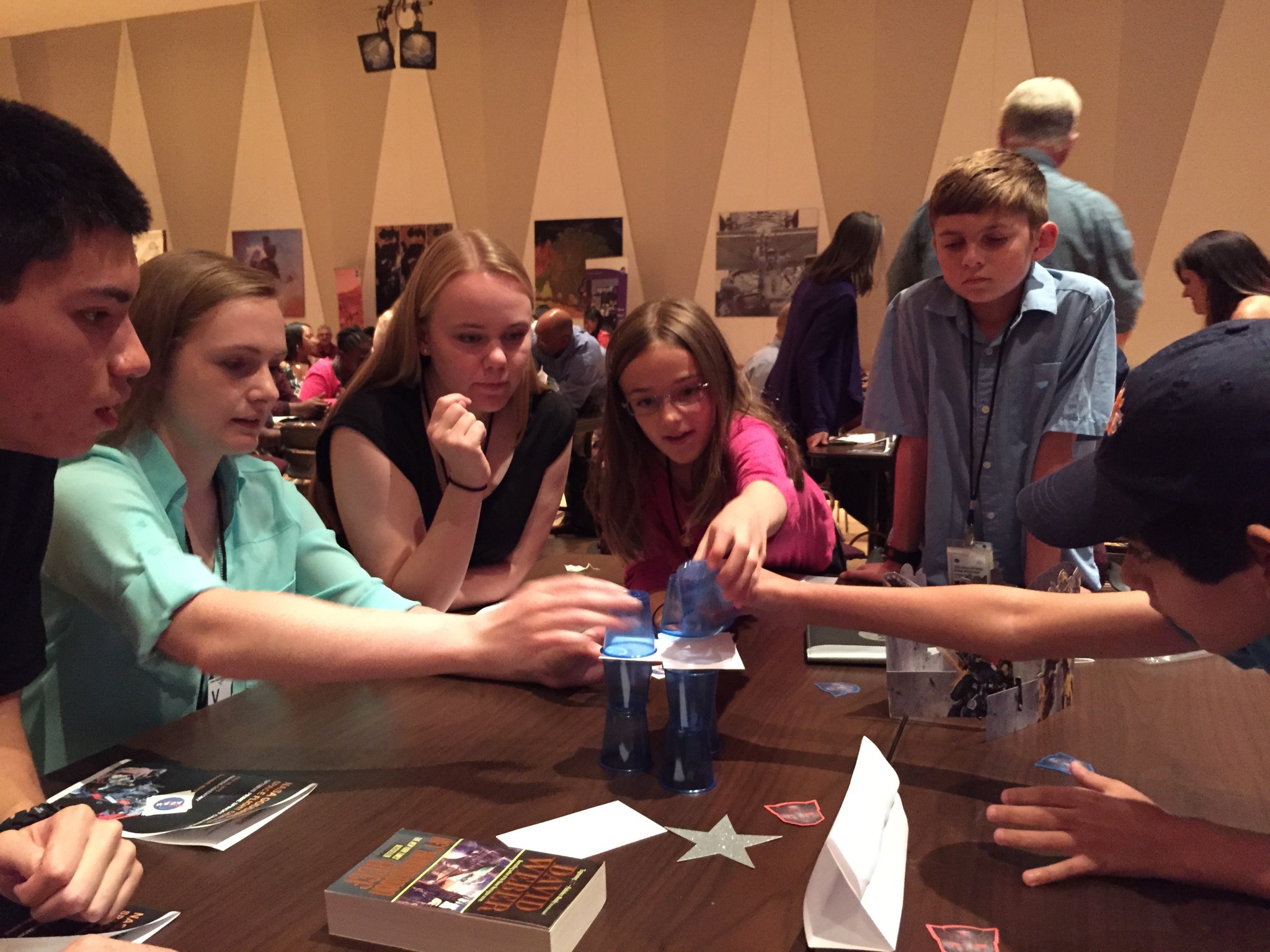Five students who won NASA Goddard’s 2015 OPTIMUS PRIME Spinoff Video Contest will knock your socks off – that’s exactly what they did to one NASA film crew.
Student teams from third through 12th grade created videos to showcase how they think NASA technology could be spun off, or repurposed for other technological and scientific projects. The contest is the brainchild of the Innovative Technology Partnerships Office (ITPO) at Goddard, who have organized the contest since its inception in 2010. The big prize for the two teams that created the winning videos was the opportunity to make another video, this time with actor Peter Cullen, the voice of OPTIMUS PRIME in a series of “TRANSFORMERS” movies, TV shows and games, including the 2007 “TRANSFORMERS” movie. They worked in the TV studio at NASA’s Goddard Space Flight Center in Greenbelt, Maryland.
A team from Barrett Elementary School in Arlington, Virginia, triumphed with their video about fitting heat shield tiles to a drone so it could explore volcanoes. Two high schoolers from H.H. Dow High School in Midland, Michigan, and Glendora High School in Glendora, California, also won for their video detailing the use of laser algorithm technology to create better maps.
The teams traveled to Goddard to receive their awards and make their new video, as well as participate in several days of tours and activities on center. Video producer Claire Saravia scheduled each team an hour and a half in front of the camera to get the video just right, but the high school team finished in about 20 minutes.
“I think these kids are pros,” Saravia said of both teams. The elementary school team completed their video in only 45 minutes. “This is a testament to the way they work. They created really great videos and I’m not at all surprised that the production process went really smoothly.”
Crewmembers, ITPO personnel, parents and students crowded the room and watched on as the students took the stage amid cameras, lights and studio structures. Kelly DeRees and David Sugg from Michigan and California, respectively, said they had no problem getting back in front of the camera.
“We got our scripts the night before,” DeRees said. “And we just kind of did it. Filming with Peter Cullen was pretty cool.”
Although they live more than 2,000 miles apart, DeRees and Sugg compete together in many NASA challenges.
DeRees said she and Sugg met through the NASA Interdisciplinary National Science Project Incorporating Research and Education Experience, or INSPIRE, program, in which they participated during their first two years in high school.
After that, she, Sugg and some of the other INSPIRE students continued working together and taking on science challenges. She and Sugg began work on this particular project in October 2014, submitting their video in January of this year. They proposed using laser algorithm technology, currently used to scan James Webb Space Telescope’s mirrors for flaws, to create more detailed and accurate maps.
The lasers used on Webb must be incredibly precise to avoid a mirror issue like Hubble Space Telescope had. Sugg said using them for maps could help scientists understand such concepts as how ice melts or how land changes in natural disasters.
The second team, from Barrett Elementary School in Arlington, Virginia, had a few more bloopers leading up to their perfect shot, such as someone missed their cue or flubbed their line. They completed filming in about 45 minutes.
Stevie Artezana, Jackson Cichelli and Kate Wilcox took their jobs very seriously, memorizing the script and sticking to the cue cards.
“My favorite part was the bloopers, when someone would make a mistake,” Kate said.
Her compatriots agreed. The elementary school students’ video details how they would apply heat shield scales from a spacecraft to a drone, which would then study volcanoes. Kate said they thought the idea was a good way to help people around the world by lowering the risk to people and property through better understanding of the phenomena. They don’t have the same distance problem as DeRees and Sugg did, but they too faced some serious obstacles to making their prize-winning video.
“They had to give up recess for a few days,” their teacher, Laurie Sullivan, said. “Stevie doesn’t really like recess, but Kate and Jackson definitely do.”
DeRees and Sugg already know they want to become scientists. Kate, Stevie and Jackson, together with their generation, are the scientists of the future.























